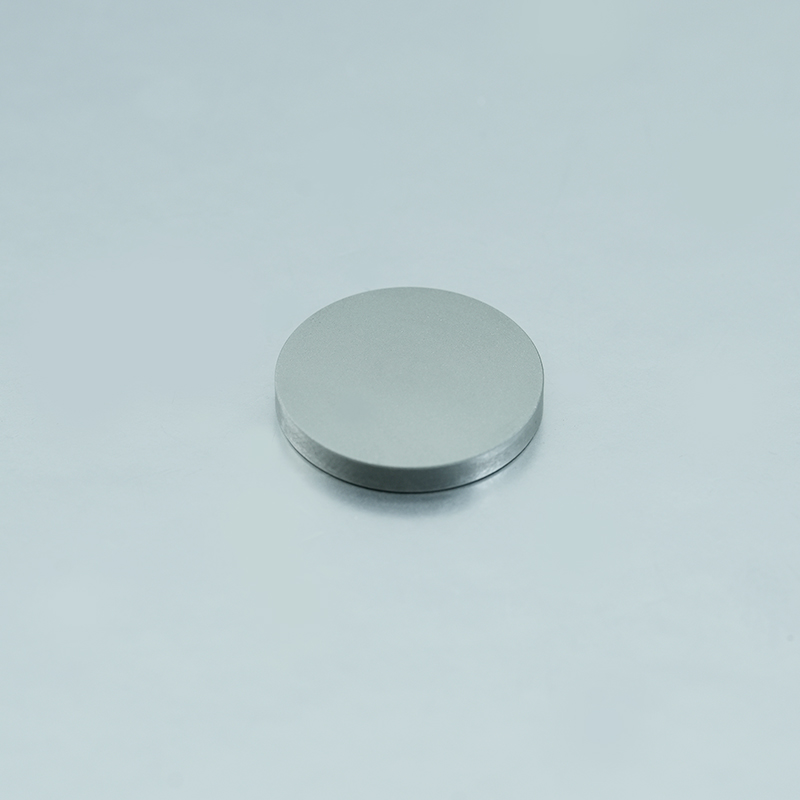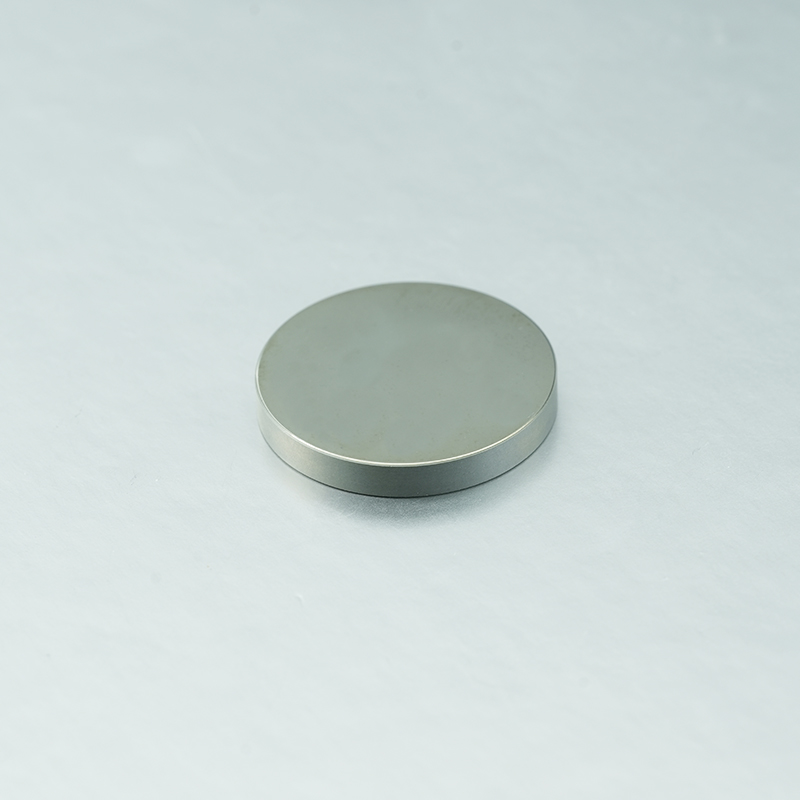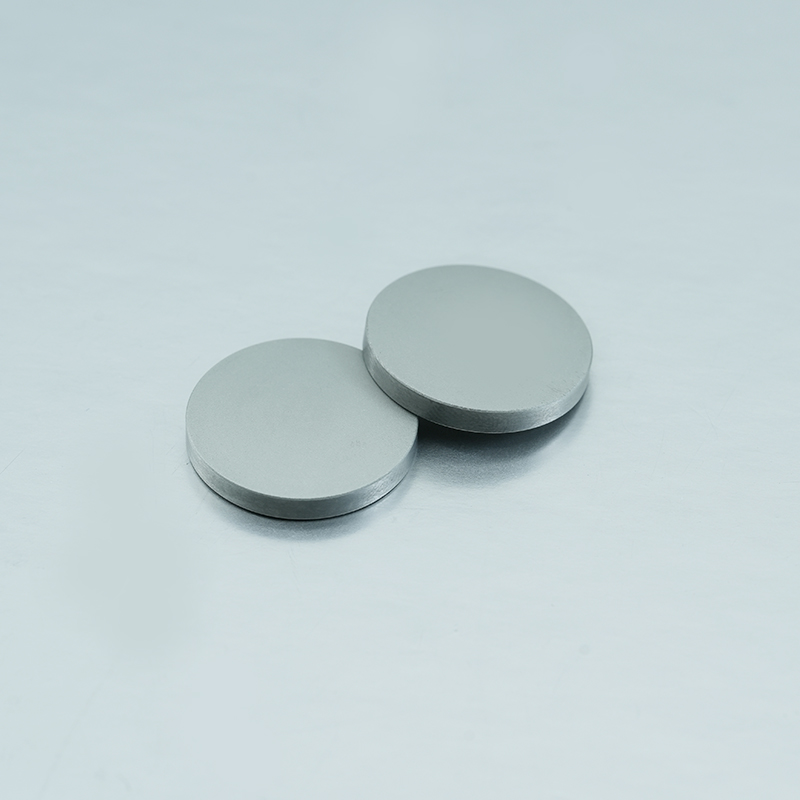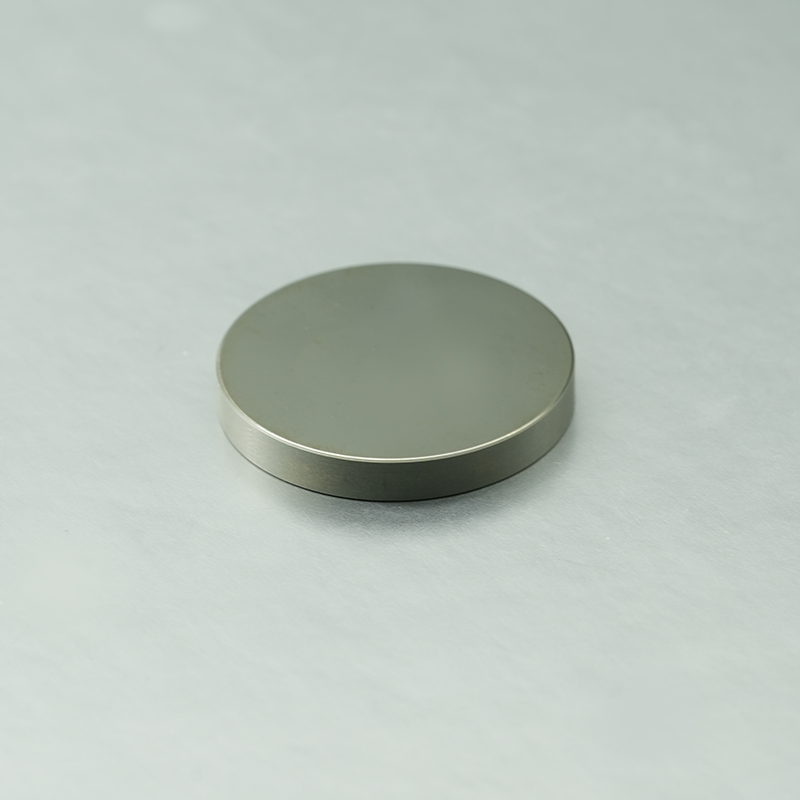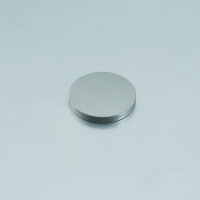Germanium(Ge) round windows
Product Introduction :
Germanium (Ge) round window is a chemically inert material with a transmission spectrum range of 2-12 μm, which is a very commonly used infrared optical material with high hardness, good thermal conductivity and insoluble in water. Germanium (Ge) round window is widely used in infrared imaging systems and infrared spectrometer systems. Germanium windows have good mechanical properties and thermal conductivity, and have very little absorption at 10.6μm, making them ideal for CO2 laser lenses, windows and output coupling mirrors. Germanium single crystals are also used as substrate materials for various infrared filters.
Our Company can provide Germanium (Ge) round windows with diameters from 2-300mm. UM OPTICS has advanced processing equipment and advanced testing equipment, including ultra-precision single point diamond turning, profilometer, ZYGO planar/spherical interferometer, Fuji interferometer, spectrophotometer, eccentric instrument, goniometer, etc., to ensure the final product quality of Germanium (Ge) windows.
Coating selection:
Anti-reflective coating, BBAR, DLC(diamond like carbon coating)
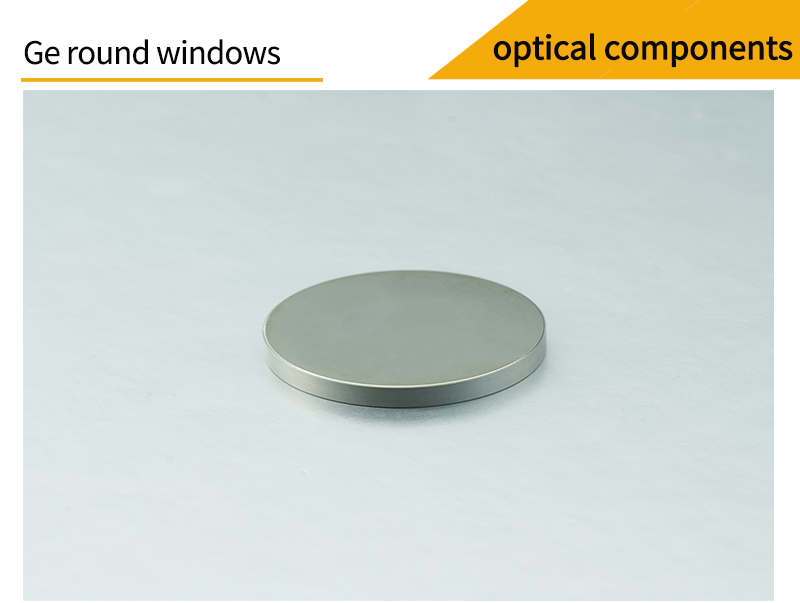
Germanium (Ge) round windows have been polished to form two surfaces parallel to each other. Germanium (Ge) round windows are commonly used as protective devices for electronic sensors, optical lenses, and laser devices. Germanium (Ge) round windows do not change the magnification of the system. Optical grade germanium crystal has a wide infrared transmission band (3~5μm and 8~12μm) and is a good material for making infrared optical lenses and windows, mostly used in thermal imaging cameras and low power CO2 laser windows. Our company can provide germanium windows in various sizes. In addition to germanium windows, UM can provide many other optical windows, such as calcium fluoride(CaF2) , barium fluoride, magnesium fluoride, lithium fluoride, silicon, germanium, zinc selenide, zinc sulfide, etc.

When selecting germanium(Ge) round windows window, focus on its material transmission properties as well as its mechanical properties.The important parameters of windows are transmission, surface quality, thickness, parallelism, substrate material and other properties, which can be selected according to the specific application.

Optical grade germanium crystal is one of the most widely used materials for infrared transmission. It is a good material for making infrared optical lenses and windows because of its high mechanical strength, low deliquescence and stable chemical properties, and is mostly used in thermal imaging cameras and low power CO2 laser windows. However, in use, the germanium crystal still requires a large enough diameter, high transmission rate and good refractive index uniformity, and low cost.
Germanium is inert in air, water, alkalis and many acids. The light-transmitting properties of germanium are extremely temperature-sensitive and are heavily influenced by temperature, with transmittance decreasing with increasing temperature; in fact, germanium becomes so absorptive at 100 °C that it is almost opaque, and completely opaque at 200 °C.

Coating refers to coating a transparent electrolyte film or metal film on the surface of the substrate material by physical or chemical methods. The purpose is to change the reflection and transmission characteristics of the material surface to reduce or increase the reflection, beam splitting, color separation, light filtering, polarization and other requirements.We can provide various optical coatings such as anti-reflective films, high-reflective films, spectral films, and metallic films. Broadband anti-reflective films are available for UV, visible, NIR and mid-infrared wavelengths.

Material Standards
●Material: germanium single crystal material with chemical composition of Ge
●Purity: The germanium polycrystalline ingots used for crystal growth shall meet the requirements of GB/T11071. Its purity shall be not less than 99.9999% (6N) and resistivity not less than 50Ω.cm.
●Growth method:CZ.
●Crystallization quality: No grain boundaries, twins or holes should be observed on the outer walls and end faces of the crystal.
●Appearance quality: The surface of the crystal sidewall is the native surface, and the two end surfaces are the cut surface or the native surface. No contamination, chipping, cracks or scratches on the side walls and both end surfaces.
●Orientation: There are two orientations of germanium single crystals: <100>and <111>.
●Conductivity types: There are two types of germanium single crystals: N-type and P-type.
●Dopant: The dopant for germanium single crystal is shown below.

●Resistivity: The resistivity of a single crystal of germanium is characterized by the resistivity of the head and tail end surfaces of the single crystal. It is divided into the following classes.

●Optical absorption coefficient: The absorption coefficient of germanium crystal should be no more than 0.01cm-1 at 3.0μm and no more than 0.03cm-1 at 10.6μm.
●Refractive index: The refractive index should be in accordance with the following table.


Monocrystalline
●There are no visible grain boundaries or wicker-like stripes on the crystal surface when examined under naked eye daylight.

Sub-crystal
●When examined under naked-eye daylight, there are willow stripes on the surface of the crystal with an area < 1/6 (end diameter), and the willow stripes are not visible after polishing .

Polycrystalline
●When examined under naked-eye daylight, there are penetrating crystal boundary lines on the surface of the crystal, and the difference in the degree of light and darkness between the two sides of the crystal boundary lines is obvious.

●N-BK7
N-BK7 is the most commonly used optical glass for processing high quality optical components,, with excellent transmittance from visible to near-infrared wavelengths(350-2000nm), and has a wide range of applications in telescopes, lasers and other fields. N-BK7 is generally chosen when the additional benefits of UV fused silica (very good transmittance and low coefficient of thermal expansion in the UV band) are not required.
●UV fused silica
UV fused silica has a high transmission from the UV to NIR (185-2100nm). In addition, UV fused silica has better uniformity and lower coefficient of thermal expansion than H-K9L (N-BK7), making it particularly suitable for high power laser and imaging applications.
●Calcium fluoride
Due to its high transmittance and low refractive index within a wavelength of 180nm-8um, calcium fluoride is often used as windows and lenses in spectrometers and thermal imaging systems. In addition, it has good applications in excimer lasers because of its high laser damage threshold.
●Barium fluoride
Barium fluoride have high transmittance from the 200nm-11um and they are resistant to stronger high-energy radiation. At the same time, barium fluoride has excellent scintillation properties and can be made into various infrared and ultraviolet optical components. However, the disadvantage of barium fluoride is that it is less resistant to water. When exposed to water, the performance degrades significantly at 500℃, but it can be used for applications up to 800℃ in a dry environment. At the same time, barium fluoride has excellent scintillation properties and can be made into various infrared and ultraviolet optical components.It should be noted that when handling barium fluoride material, gloves must be worn at all times and hands must be washed thoroughly after handling.
●Magnesium fluoride
Magnesium fluoride is ideal for applications in the wavelength range of 200nm-6um. Compared to other materials, magnesium fluoride is particularly durable in the deep UV and far IR wavelength ranges. Magnesium fluoride is a powerful material for resistance to chemical corrosion, laser damage, mechanical shock and thermal shock. It is harder than calcium fluoride crystals, but relatively soft compared to fused silica, and has a slight hydrolysis. It has a Nucleus hardness of 415 and a refractive index of 1.38.
●Zinc selenide
Zinc selenide has high transmittance in the 600nm-16um and is commonly used in thermal imaging, infrared imaging, and medical systems. Also, due to its low absorption, zinc selenide is particularly suitable for use in high-power CO2 lasers. It should be noted that zinc selenide is a relatively soft material (Nucleus hardness 120) and is easily scratched, so it is not recommended for use in harsh environments. Extra care should be taken when holding, and cleaning, pinching or wiping with even force, and it is best to wear gloves or rubber finger covers to prevent tarnishing. Cannot be held with tweezers or other tools.
●Silicon
Silicon is suitable for use in the NIR band from 1.2-8um.Because of its low
density, silicon is particularly suitable in applications where weight
requirements are sensitive, especially in the 3-5um . Silicon has a Nucleus
hardness of 1150, which is harder than germanium and not as fragile as
germanium.It is not suitable for transmission applications in CO2 lasers
because of its strong absorption band at 9um.
Germanium is suitable for use in the near-infrared band of 2-16um and is well
suited for infrared lasers. Due to its high refractive index, minimal surface
curvature and low chromatic aberration, germanium does not usually require
correction in low power imaging systems. However, germanium is more
severely affected by temperature, and the transmittance decreases with
increasing temperature; therefore, it can only be applied below 100°C. The
density of germanium (5.33 g/cm³) is taken into account when designing
systems with strict weight requirements. Germanium lenses feature a
precision diamond lathe turned surface, a feature that makes them well suited
for a variety of infrared applications, including thermal imaging systems,
infrared beam splitters, telemetry, and in the forward-looking infrared (FLIR)
field.
●CVD ZnS
CVD ZnS is the only infrared optical material, other than diamond, that covers visible to long-wave infrared (LWIR), full wavelength and even microwave wavelengths, and is currently the most important LWIR window material. It can be used as windows and lenses for high-resolution thermal imaging systems, as well as for advanced military applications such as "tri-optical" windows and near-infrared laser/dual-color infrared composite windows.










































































